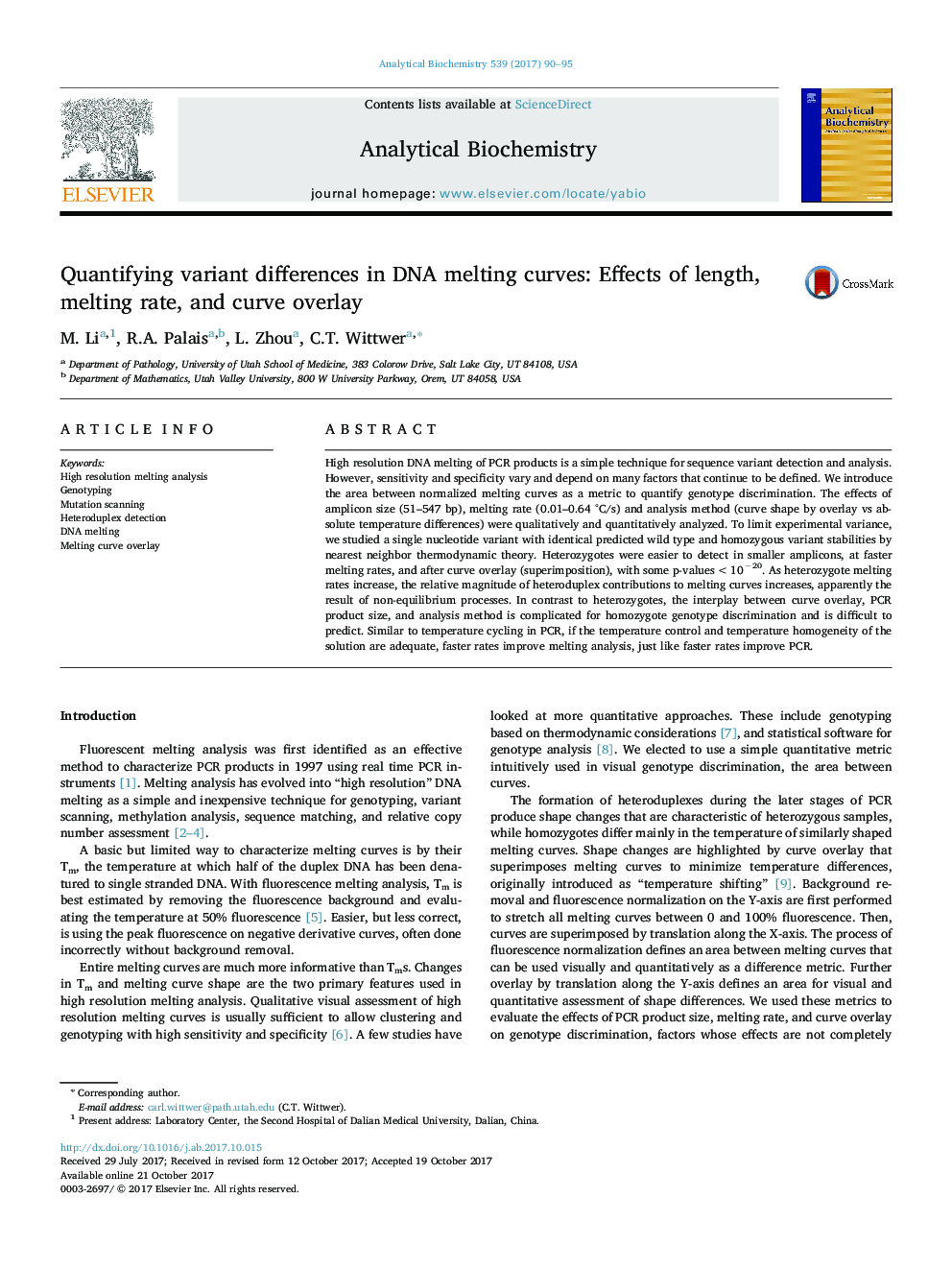| Article ID | Journal | Published Year | Pages | File Type |
|---|---|---|---|---|
| 7557171 | Analytical Biochemistry | 2017 | 6 Pages |
Abstract
High resolution DNA melting of PCR products is a simple technique for sequence variant detection and analysis. However, sensitivity and specificity vary and depend on many factors that continue to be defined. We introduce the area between normalized melting curves as a metric to quantify genotype discrimination. The effects of amplicon size (51-547 bp), melting rate (0.01-0.64 °C/s) and analysis method (curve shape by overlay vs absolute temperature differences) were qualitatively and quantitatively analyzed. To limit experimental variance, we studied a single nucleotide variant with identical predicted wild type and homozygous variant stabilities by nearest neighbor thermodynamic theory. Heterozygotes were easier to detect in smaller amplicons, at faster melting rates, and after curve overlay (superimposition), with some p-values <10â20. As heterozygote melting rates increase, the relative magnitude of heteroduplex contributions to melting curves increases, apparently the result of non-equilibrium processes. In contrast to heterozygotes, the interplay between curve overlay, PCR product size, and analysis method is complicated for homozygote genotype discrimination and is difficult to predict. Similar to temperature cycling in PCR, if the temperature control and temperature homogeneity of the solution are adequate, faster rates improve melting analysis, just like faster rates improve PCR.
Related Topics
Physical Sciences and Engineering
Chemistry
Analytical Chemistry
Authors
M. Li, R.A. Palais, L. Zhou, C.T. Wittwer,
